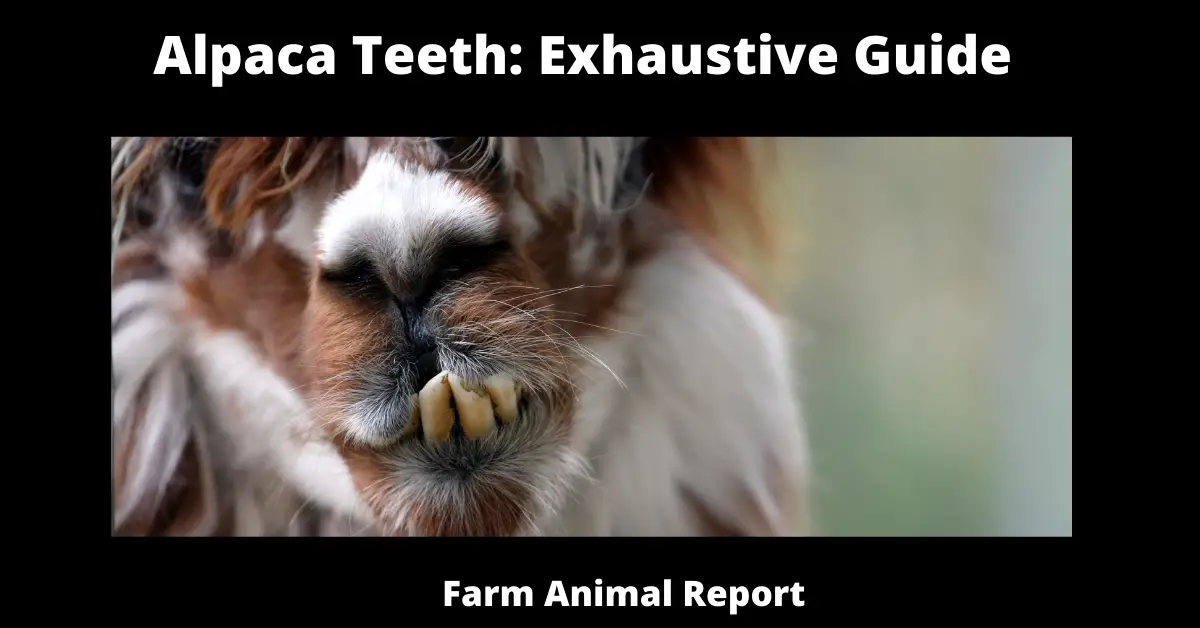As a General Rule Alpacas develop canine teeth on both the upper and lower jaws by the time they are four years old. In males, these teeth grow large. Male llamas have more prominent teeth than female llamas and even larger teeth than female llamas (like railroad spikes in Dromedary camels). As a result of male fighting behavior, Alpaca Teeth need Periodic trimming, dulling and grinding to repair broken teeth.
Alpaca Teeth – Design and Care
- Trimming Periodically
- Cost to Have Alpaca Teeth Trimmed
- Dulling & Grinding
- Retained Descidious Teeth
- Chipped and Broken Teeth
- Dental Infections
- Incisors
- Fighting Teeth
- Molars
Do Alpaca have teeth?
Alpaca Teeth -. Adult teeth in llamas and alpacas are usually 30 or 32 in number. All of these erupt by the age of six.
Check Out Amazon’s Educational Resources for Raising Alpacas
Both llamas and alpacas have acquired their teeth from their wild ancestors, which is true of both species. The dental architecture and specialization of teeth observed in llamas and alpacas may be traced back to ancient camelids that lived 25 million years ago. Llamas and alpacas have the same number and kind of teeth (they have the same dental formula): molars, incisors, and canines (the same as humans).
When comparing the two species, the incisors (front teeth) of llamas are encased in enamel, but in other species, the teeth are susceptible to developing throughout the animal’s lifetime. Many llamas, on the other hand, are still in need of tooth trimming. Alpacas’ teeth have characteristics with both llamas and vicunas; for example, they typically have no or little enamel on the tongue side of their teeth and continue to grow teeth well into maturity.
Anatomy of Alpaca/Llama Teeth
Alpaca Teeth – Alpacas or Llamas usually have six incisors in front of the lower jaw (mandible) and no front teeth in front of the upper jaw (maxilla) in the front of the lower jaw. The incisors are meant to aid in the acquisition of food. This is done by the llama or Alpaca grasping a blade of grass growing from the ground and closing its lips on it, pressing the grass on the dental pad (front of the top jaw) with its incisors (teeth at the front of the lower jaw).
While holding the grass in place, the animal pulls it away and consumes it. These teeth are deciduous, meaning they will be shed and replaced by permanent teeth at reasonably predictable intervals as the animal grows older and develops more complex teeth. The alignment of the incisors is critical. When closing the upper jaw, the incisors should be squarely in contact with the dental pad at the front of the upper jaw. The relationship between the incisors and the palate and how they meet determines how efficiently the animal will be able to get food in various situations.
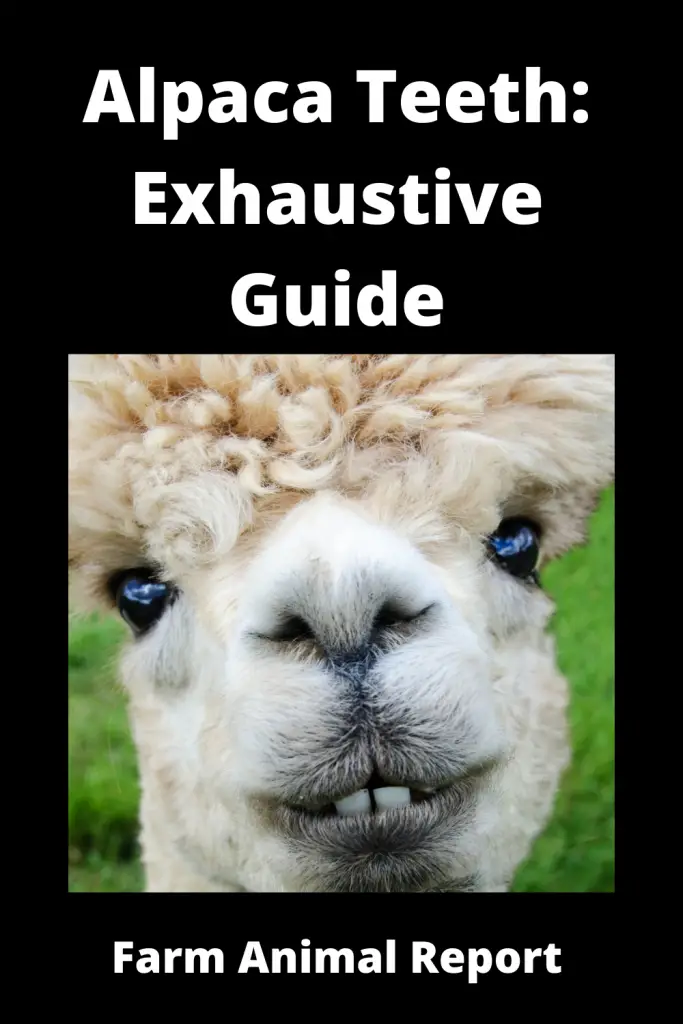
When the incisor teeth of a llama or alpaca teeth are properly aligned (with the dental pad of the maxilla), the regular chewing action of the animal will progressively wear them down when the teeth come into contact with the dental pad. If the alignment is poor, which often means that the incisors miss the dental pad by projecting past it, it is expected that the teeth will continue to grow in length. Teeth that protrude significantly past the dental pad sometimes missing it by a centimeter or more, make it difficult to eat comfortably and efficiently. Lower jaw length is a common deformity in both alpacas and llamas.
18 ways Alpaca Farmers make Money
Molars: There are three molars on each side of each jaw, as well as two premolars. These massive grinding teeth, which are located in the back of the mouth, are critical in the digestion of food. Molars are used to pulverize food before it is eaten, and they are employed violently when the animal chews its cud, which is made up of stuff taken up from its stomach by the chewing action. Early molar development in young animals is rarely a source of worry.
Periodontal disease, tooth abscesses, and uneven wear can negatively impact an animal’s ability to eat correctly in older animals. Failure of the molars affects survivorship. As the population of geriatric animals in North America continues to expand, more attention is devoted to their molars. It is challenging to work on camelid molars, even for experienced veterinarians, because they are located at the back of the mouth, and the camelid’s mouth does not open completely. When a problem with the molars is suspected, a radiograph is usually the most effective technique to determine the extent of the problem.
In some cases, wear and tear on molars can result in molars with jagged tops and imperfect grinding action due to the compromised grinding motion. In some circumstances, uneven surfaces are ground (or flattened or floated) in order to improve the compatibility of how molars fit together when they are grinding food together. Molar abscesses are also challenging to treat, and the likelihood of success is inversely proportional to how quickly they are discovered.
Canine Teeth: The canine teeth, commonly known as fighting teeth, are present on all adult male alpacas and llamas and are present on all adult female alpacas and llamas. They can be found in the jaw between the incisors and the molars, and they are called premolars. While they are not present at birth, they usually begin to emerge about 24 months, and in certain animals, they may not fully appear until seven years of age.
Adult females also have canine teeth, which are less visible but nonetheless razor-sharp than their male counterparts. Because of the disposition of females and the fact that their canines are typically barely visible above the surface of the skin, they are rarely a source of concern for humans.
It is possible to have three canines on each side of the maxilla (upper jaw) and one canine on each side of the mandible (lower jaw) for a total of three canines on each side of the mouth. Upon fully erupted, these teeth have a backward curve and are razor-sharp, and they are intended to lacerate an opponent while engaged in combat. When it comes to males, canines can reach a length of an inch and a half (2.54 cm). If canines are not removed, severe and irreversible harm may result.
Male llamas have more prominent teeth than female llamas and even larger teeth than female llamas (like railroad spikes in Dromedary camels). As a result of male fighting behavior, common injuries include torn or severed ears, permanently damaged tails, lacerated testicles, and lifelong leg lameness resulting from torn tendons and ligaments in the legs.
Cutting Incisors: Cutting incisors includes a more significant number of variables than one might expect. Ideally, the cut should be made at the point where the teeth would make contact with a dental pad if they were the proper length and alignment. After being neglected for an extended length of time, the animal’s incisors might become rather long and protrude from its face.
Such teeth are unattractive, and they are less efficient at collecting food than teeth that are correctly aligned. They are also more prone to breaking off as they grow longer, owing to the greater leverage at the end of the tooth as it grows longer. Tooth enamel can grow quite thick and difficult to cut, even in animals not mistreated, especially in elderly animals.
Do Alpacas have Top Teeth?
Alpacas have top teeth. Alpacas develop canine teeth on both the upper and lower jaws by the time they are four years old. In the males, these teeth grow large with serrated rear edges, making them an effective weapon when tussling with other males, which is typical behavior for them to establish their pecking order within the herd. It is necessary to cut these male canines close to the gum line – which is a straightforward procedure –to prevent damage.
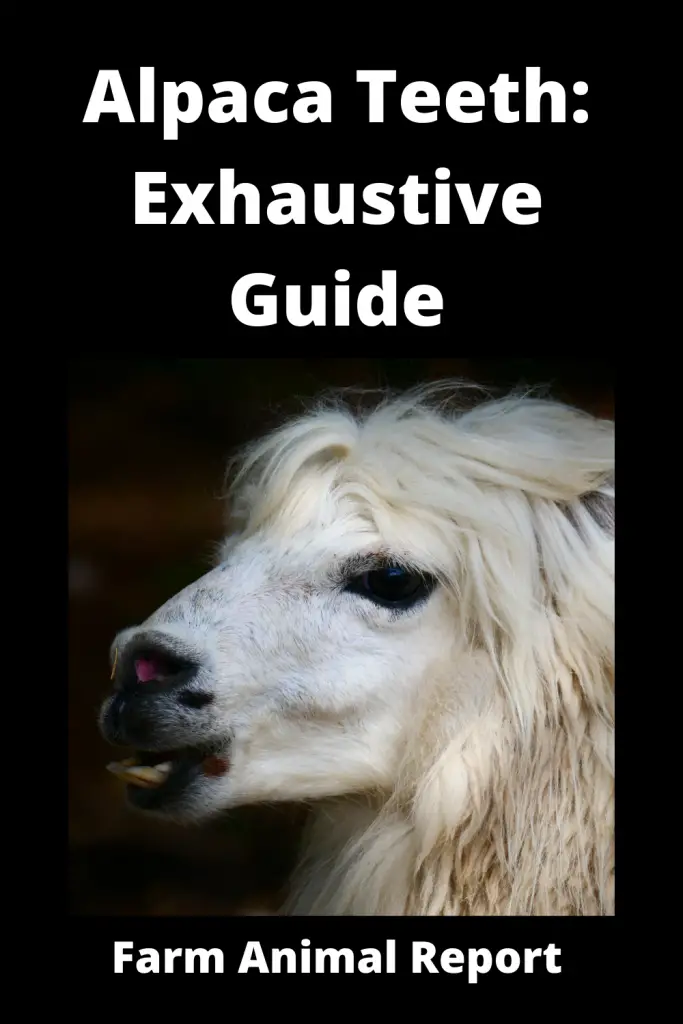
Do you have to trim Alpaca’s Teeth? Or Do alpacas need their teeth trimmed?
Yes, you have to trim Alpacas teeth, especially the incisors which are protruding from the jaws. They must be trimmed periodically.
Do llamas have Upper Teeth? Or do Llamas have Top Teeth?
Yes, they have top teeth. Llamas have three pairs of front teeth, known as incisors, positioned on the lower jaw of adult llamas. The presence of fighting teeth, often known as fangs, in the llama dentition is an intriguing feature. These are canine and incisor teeth that have been changed. The intact male has three pairs of combat teeth, two upper pairs, and one lower pair, arranged in a V formation. Fighting teeth in females are typically underdeveloped in comparison to males. Males who have been gelded at a young age are likewise more likely to have small fighting teeth. They appear in males between the ages of 2 and 3 years and females between the ages of 4 and 5.
Do llamas and alpacas have Top Teeth?
Yes, they both have top teeth, as mentioned above.
Do llamas Teeth need to be Trimmed?
Yes, long llama incisors, whether deciduous or permanent, should be trimmed so that they, at the very least, contact the dental pad at the front edge. Typically, the bottom front teeth must be aligned with the pallet on top of the mouth, devoid of teeth. This enables them to pick up grass and eat it using their molars, which are located at the back of their mouth. Alpaca teeth continue to grow outwards, so they need to be trimmed or continue to grow.
How Much does it Cost to Trim Alpaca Teeth?
Usually, trimming of Alpacas front teeth costs $10-12/head, and fighting teeth cost $14-15/head. You also have to give a separate extra service fee to the provider.
How Do you Take Care of an Alpaca Tooth?
Many alpacas (and, on occasion, llamas) require routine dental care to keep their teeth in good condition. The most often performed operations are as follows:
- Mild trimming of the lower front incisors
- Dulling/grinding down of the canine (fighting) teeth
Both of these procedures are provided by a veterinarian (usually under sedation) or by a shearer during the shearing process.
Why do Alpacas Grind their Teeth?
Alpacas have large teeth, which are ideal for crushing food and are required for good digestion to be adequately digested. They grind their teeth because it helps the animal pulverize food and chew partially digested cud that comes from the stomach, similar to how a cow grinds her teeth. Gum disease, tooth abscesses, and uneven wear are common problems in older alpacas, all of which impact their ability to eat.
Do Alpaca’s Bite?
No, alpacas are not known to bite in the general sense. Their lower jaw is devoid of teeth, while their upper jaw has a dental pad, similar to how cattle are equipped.
But they may bite in stressed conditions (due to any disease or illness)
What are the uses of Llamas and Alpacas?
Llamas and alpacas, like sheep and goats, are used for a variety of tasks. It is possible to shear, spin, and use the fiber from llamas and alpacas to make clothing and other items. Alpacas are mostly farmed for their fiber, although llamas are used for a variety of additional tasks. For humans, llamas serve as pack animals, transporting their belongings. They are also used for milk production and meat production. Llamas are also excellent guard animals for flocks of sheep, goats, or even alpacas, and they may be trained to do so.
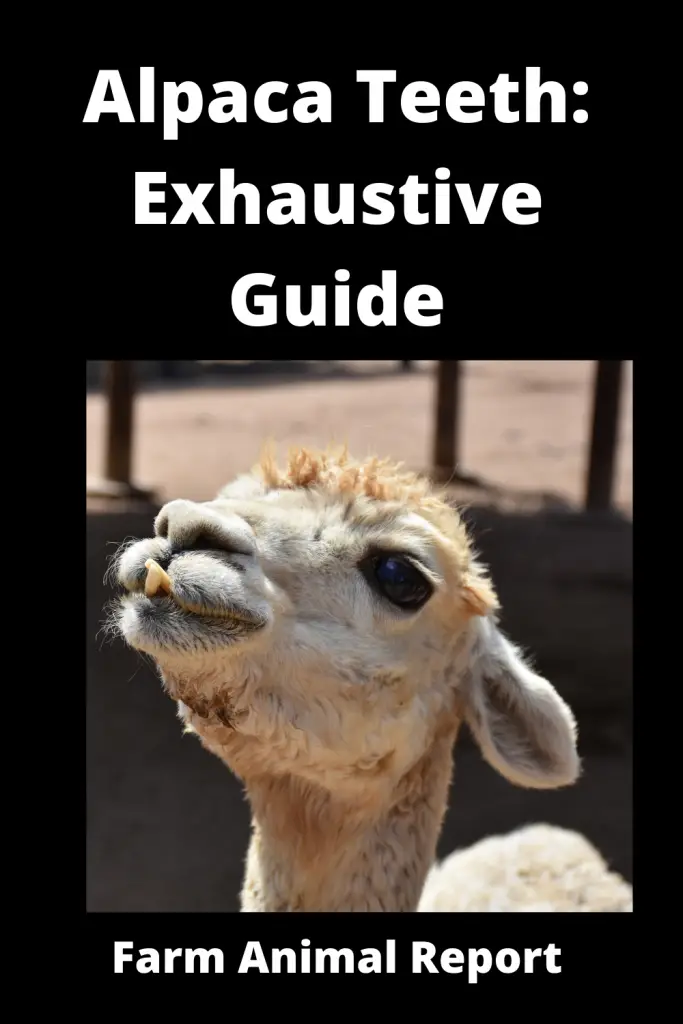
Do Llamas and Alpacas spit?
They may spit at one another to establish their social order, but they spit at people only in very unusual circumstances. This may occur if the animals were terrified, intimidated, or otherwise uncomfortably situated. Llamas and alpacas, like other animals, would exhibit different behaviors to indicate that they were uncomfortable around a human. If the person does not pay attention or does not comprehend what the animal is saying, the animal may spit.
Why do Alpaca and Llama make Noise?
Llamas and alpacas, like many other animals, have a variety of varied sounds that they make. The most common sound you’ll hear is most likely a hum, which they generate when they’re bored, tired, or curious. They will also make an alarm call if they feel endangered or scream if they are terrified. To comfort her newborn, or cria, the mother will make clucking noises with her mouth. An orgling sound, often known as a mating cry, is made only by males.
What is the difference between a Llama and an Alpaca?
Llamas are larger, taller, and heavier than alpacas, and they have a longer coats. Llamas are primarily used as pack animals, transporting humans and their belongings, whereas alpacas are bred mainly for fiber. Llamas have ears that are shaped like bananas, whereas alpacas have ears that are shaped like diamonds. The fiber produced by llamas is coarser than that produced by alpacas.
Alpaca Dental Issues
Alpacas of any sex can suffer dental problems at any age, regardless of their gender. Serious dental problems in females are frequently more apparent during late pregnancy or lactation when they have the highest nutritional requirements of their lives.
If your Alpaca exhibits one or more of the symptoms listed below, they may result from dental problems.
- Deterioration of body condition – this is especially true if the other animals in the same environment are doing well. These alpacas can usually be identified through regular body condition grading or weighing.
- A reluctance to eat, which is accompanied by noticeable discomfort when chewing. Often, these animals do not consume the portion of the meals they are given.
- Not chewing cud.
- Feed spillage from the mouth while chewing.
- Undigested food in droppings.
- Swelling in the area surrounding the jaw. The swelling is often temporary as the animal uses hay or grass to insulate itself from the pain caused by chewing while creating protective pads to protect itself.
- A dissatisfied demeanor
- Abscess in the jaw.
Some Other Dental Problems
1. Retained Deciduous Teeth
When it comes to oral illness, llamas do not appear to have nearly as many issues as humans do. It is possible that a deciduous or baby tooth will not have fallen out by the time the permanent tooth emerges. The temporary teeth should be loosened in small increments over time. Rocking them back and forth gently over a period of several days is an effective method of achieving this. If the tooth does not fall out on its own, it can be readily extracted with a dental drill. It is recommended that your veterinarian remove the tooth if this fails.
2. Teeth that are Broken and Chipped
When llamas are playing or fighting aggressively, they may accidentally knock out or shatter a tooth while sparring, resulting in a highly bloody mouth. Deciduous teeth are most typically affected because their roots are not as extensive and secure as those of permanent teeth; hence this occurs more frequently. When multiple baby teeth are chipped or damaged, young men might be rather piratical in appearance!
Fortunately, when the animal ages, the broken or missing deciduous teeth are replaced by permanent teeth. To establish the degree of the problem, it is necessary to check broken deciduous or permanent teeth. Loosened teeth may need to be extracted, and your veterinarian will need to determine whether or not there is a danger of infection.
3. Infections
Other dental disorders may manifest themselves as forming a solid, bony bump on one’s cheek or jaw. Although a lump may be a wad of food, it should be inspected because it is frequently an indication of a tooth infection and should be treated accordingly. The danger of infection for every tooth and its root is significant, but the risk is slightly higher when a tooth has been damaged, such as when it has been fractured or sawed off.
The bony mass develops in the area surrounding the diseased tooth or tooth stump. An X-ray can confirm the presence of infection, and if it is there, it will necessitate medical or potentially surgical intervention. Even though antibiotics are often used to treat a disease, dental surgery to remove the infected tooth is almost always necessary.
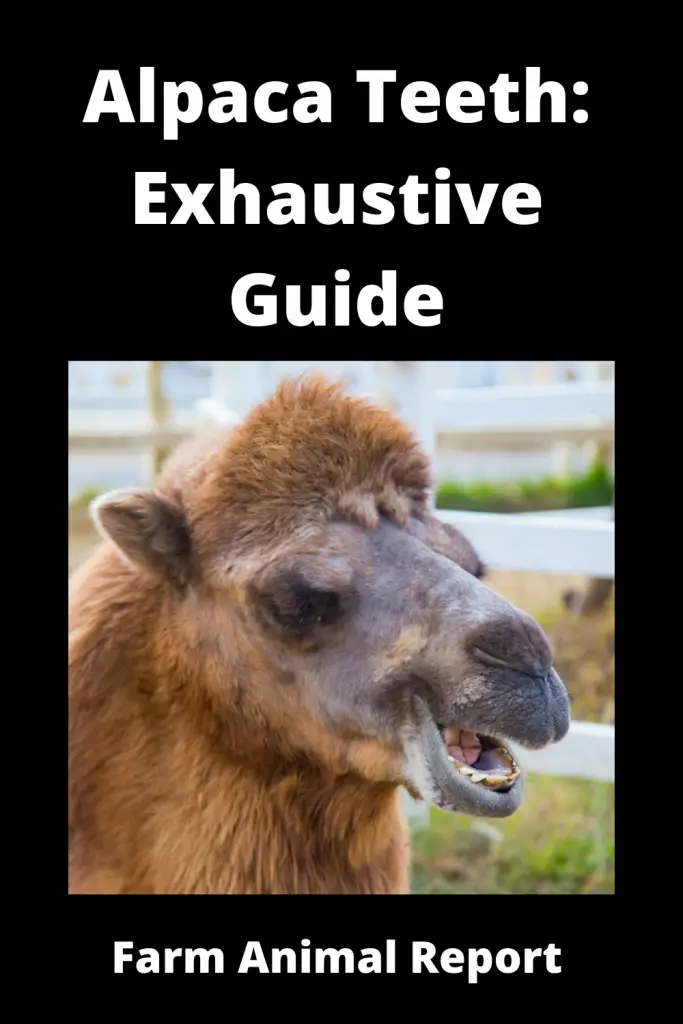
4. Dental Problems in Older Animals
Old or diseased teeth are frequently loosening and falling out as the llama ages. Missing teeth or irregular wear on the teeth of a llama can cause problems with the first step of digestion, the mechanical breakdown of food through chewing, which will result in digestive issues. Even if a llama is still consuming sufficient food, it will lose weight in this situation. Due to possible soreness in the mouth, it may eat less food from time to time.
When improper chewing is noted, your veterinarian should do an oral examination of your pet. It may be essential to float or file uneven edges on the teeth in order to achieve a proper fit. The llama should be fed softer food that does not need substantial chewing if it is still having difficulty chewing or missing many teeth. Alfalfa pellets may be combined with a bit of grain and softened with water to form a gruel. They are an excellent supplement for llamas who have lost their ability to chew effectively enough to obtain the nutrients they require hay or pasture alone.
5. Issues with Incisors
Incisors are the ‘cutting teeth’ located at the front of the mouth, and they are used to bite off grass and leaves and scratch the surface of the skin on occasion. Undoubtedly, one of the most prevalent issues that can arise with incisors is when they become too long, protrude past the dental pad, and can be seen poking out from between the lips.
If the incisors do not contact the dental pad, they will not wear down and continue to grow longer. This makes it difficult for the animal to graze, as well as causing callouses and bruises on the oral pad and the possibility of cutting the lips. These teeth are in desperate need of trimming. If the incisors are not properly trimmed, they will obstruct the entrance to the mouth, causing discomfort and a loss of body condition. This can occur in animals of all ages, even newborns.
6. Issues with Fighting Teeth
Males often have huge, well-developed fighting teeth that are positioned on either side of the mouth behind the incisors on both sides of the mouth. They begin to appear when the Alpaca is roughly three years old. Fighting teeth are incredibly sharp and are meant to rip and tear during struggles for dominance. They should be clipped to guarantee the safety of their paddock companions and handlers during fights for dominance.
Fighting teeth can also create discomfort by digging into the opposing jaw, cutting the gums and lips, and cutting the gums and lips of the opponent.
7. Issues with Molars
The molars are the teeth located at the back of the mouth, and they are also referred to as cheek teeth in some circles. These teeth are responsible for grinding the food into a consistency that is acceptable for swallowing. Because of this, the Alpaca’s ability to chew and, eventually, digest its food improves with each new set of teeth. The following are some of the issues that can arise with molars:
- Cracked or split teeth
- Sharp points cutting the soft tissue of the cheeks and tongue
- Loose teeth
- Protuberant (over-long) molars gouging into the opposite jaw
- Ulcers
- Extra teeth
- Retained baby (milk) teeth
- Infected teeth and gums
- Abscesses
- Mis-placed teeth
Every one of these issues is painful, and it will cause the Alpaca to eat less food, which will result in a loss of body condition, a decrease in milk production in females, and an overall drop in the health of all alpacas.
It is often essential to use specialized equipment to identify and manage these concerns. This equipment allows you to keep the mouth open, view within, and take action to correct the problem and relieve discomfort.
Learn More – 18 Ways Alpaca Farmers Make Money
Final Thoughts: Alpaca Teeth: Do you have to Trim Llama teeth? Or do you have to trim alpaca teeth?
Yes, it would help if you trim Alpaca and Llama teeth regularly to keep them healthy. You should contact your local veterinarian if you have any concerns about the teeth of your Alpaca or llama, and they should be able to connect you with a horse dentist who will be able to give your animal a comprehensive dental check-up and repair any potential problems.


